The 1918–19 NHL season was the second season of the National Hockey League (NHL). While at first it was uncertain that the NHL would operate, and the possibility that National Hockey Association (NHA) would be resumed, the unfinished business of Eddie Livingstone's Toronto and Ottawa's NHA franchise, led to the NHL owners suspending the NHA again. Livingstone would attempt to overthrow the NHA management, and failing that, attempt to operate a rival league. The pre-season was filled with legal actions, deceptions and public verbal attacks. Ultimately, the NHL operated with three teams, in Montreal, Ottawa and Toronto. However, the season ended early with Toronto suspending operations, leaving Montreal and Ottawa to play off for the championship. Montreal would win the playoff and travel to Seattle for the Stanley Cup Finals. However, the championship series was not completed due to influenza infecting the whole Montreal team and causing the eventual death of Montreal's Joe Hall.

Mutual Street Arena, initially called Arena Gardens or just the Arena, was an ice hockey arena and sports and entertainment venue in Toronto, Ontario, Canada. From 1912 until 1931, with the opening of Maple Leaf Gardens, it was the premier site of ice hockey in Toronto, being home to teams from the National Hockey Association (NHA), the National Hockey League (NHL), the Ontario Hockey Association (OHA) and the International Hockey League (IHL). It was the first home of the Toronto Maple Leafs, who played at the arena under various names for their first 13½ seasons. The Arena Gardens was the third rink in Canada to feature a mechanically frozen or 'artificial' ice surface, and for eleven years was the only such facility in eastern Canada. In 1923, it was the site of the first radio broadcast of an ice hockey game, the first radio broadcast of an NHL game, and the first broadcast of an ice hockey game by long-time broadcaster Foster Hewitt.

TD Place Arena, originally the Ottawa Civic Centre, is an indoor arena located in Ottawa, Ontario, Canada. Opened in December 1967, it is used primarily for sports, including curling, figure skating, ice hockey, and lacrosse. The arena has hosted Canadian and world championships in figure skating, curling, and ice hockey, including the first women's world ice hockey championship in 1990. It is also used for concerts and conventions such as Ottawa SuperEX.

The Aberdeen Pavilion is an exhibition hall in Ottawa, Ontario, Canada. Overlooking the Rideau Canal, it is located in Lansdowne Park, Ottawa's historic fairgrounds. For many years, the building was known as the "Cattle Castle", due to its use for the Central Canada Exhibition's agricultural exhibits and shows. It is the last surviving Canadian example of what was once a common form of Victorian exhibition hall, and was designated a National Historic Site of Canada in 1983.
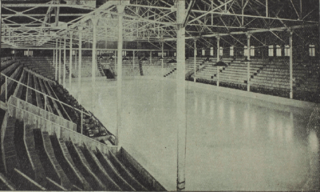
The Montreal Arena, also known as Westmount Arena, was an indoor arena located in Westmount, Quebec, Canada on the corner of St. Catherine Street and Wood Avenue. It was likely one of the first arenas designed expressly for hockey, opening in 1898. It was the primary site of amateur and professional ice hockey in Montreal until 1918.
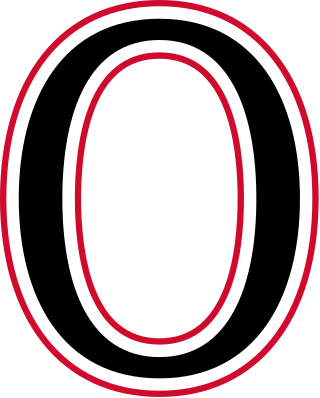
The Ottawa Senators were an ice hockey team based in Ottawa, which existed from 1883 to 1954. The club was the first hockey club in Ontario, a founding member of the National Hockey League (NHL) and played in the NHL from 1917 until 1934. The club, which was officially the Ottawa Hockey Club, was known by several nicknames, including the Generals in the 1890s, the Silver Seven from 1903 to 1907 and the Senators dating from 1908.
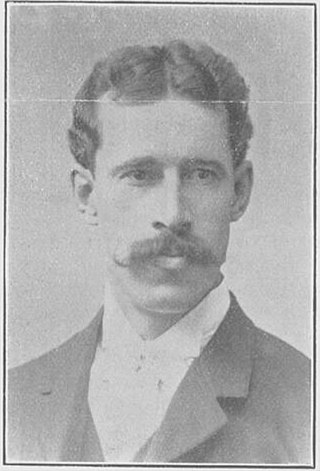
Philip Dansken Ross was a Canadian journalist, newspaper publisher, amateur athlete, and ice hockey administrator.

Confederation Park(French: Parc de la Confédération) is a public park and National Historic Site of Canada, located in the downtown core of Ottawa, Ontario, Canada. It is bordered on the south by Laurier Avenue and Ottawa City Hall; on the east by the Rideau Canal and National Defence Headquarters; on the north by the Mackenzie King Bridge, the Rideau Centre and the National Arts Centre; and to the west by Elgin Street and the Lord Elgin Hotel.
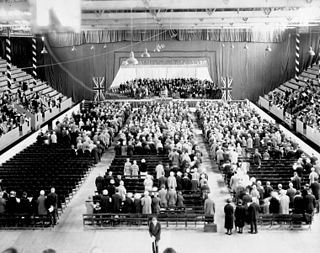
The Ottawa Auditorium was a 7,500-seat arena located in Ottawa, Ontario. It was located in Downtown Ottawa at the corner of O'Connor and Argyle Streets, today the site of the Taggart Family YMCA. Built primarily for ice hockey, the arena was also used for sports events, assemblies and musical concerts.
Dey's Arena, also known as Dey Brothers Rink, Dey's Skating Rink and The Arena, were a series of ice rinks and arenas located in Ottawa, Ontario, that hold importance in the early development of the organized sport of ice hockey in Canada. It was the home arena of the Ottawa Hockey Club, variously known as the Generals, the Silver Seven and the Senators from the 1890s until 1923, although it is known that games were also played at the Rideau Skating Rink in the 1890s and the Aberdeen Pavilion in 1904. The rink and arenas were built by two generations of the Dey family, who were prominent in Ottawa at the time, with a thriving boat works business serving the lumber business. The Dey family also played hockey.
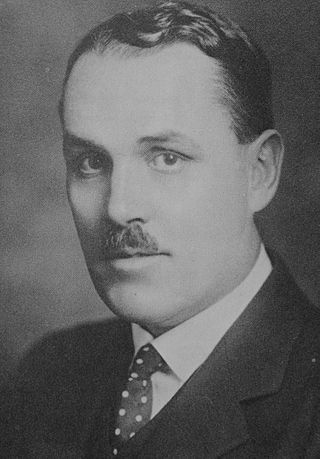
Thomas Franklin "Frank" Ahearn was a Canadian businessman and politician. Ahearn is best known as an owner of the original Ottawa Senators National Hockey League (NHL) hockey club and a Canadian Member of Parliament.
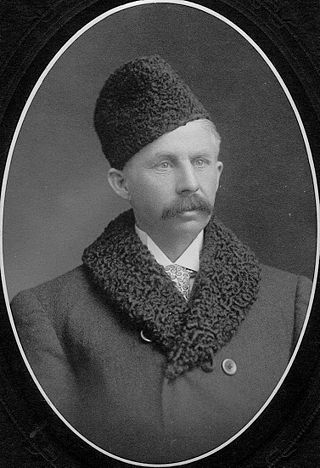
Edwin Peter Dey was a boat-builder, ice arena owner, and hockey team owner. He was an owner of the Ottawa Senators men's ice hockey club from 1917 until 1923. He and his brothers Frank Edgar Dey and William Ernest Dey built the various Dey's Arenas where the Senators played until 1922–23.
The Ottawa City Hockey League (OCHL) was an amateur ice hockey league with junior, intermediate and senior level men's teams in Ottawa, Canada. Founded in 1890 by the local Ottawa Hockey Association, the OCHL was created to organize play within the city of Ottawa. It is considered the second ice hockey league to form in Canada.
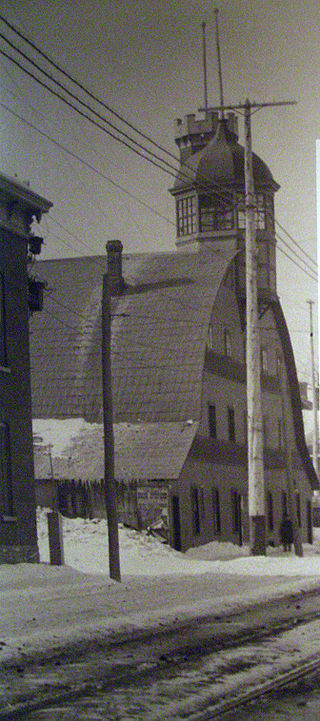
The Rideau Skating Rink was an indoor skating and curling facility located in Ottawa, Ontario, Canada. Consisting of a curling rink and a skating rink, it was one of the first indoor rinks in Canada. The Rideau Rink was scheduled to open on January 10, 1889, but unseasonably mild weather postponed the grand opening to February 1. It opened on January 25, 1889 for select V.I.P.s although this was a misunderstanding and should not have denied entry to season ticket holders. It was located on Theodore Street, at Waller Street, at the present location of the Arts Hall of the University of Ottawa, near the Rideau Canal.
In Ottawa, Canada, ice hockey clubs date back to the first decade of recorded organized ice hockey play. The men's senior-level Ottawa Hockey Club is known to have played in a Canadian championship in 1884. Today, Ottawa hockey clubs are represented in all age brackets, in both men's and women's, in amateur and professional.
The 1890 Ottawa Hockey Club season was the club's fifth season of play. Although the club was based at the Rideau Skating Rink, it played only two games against outside teams and did not participate in championship play.
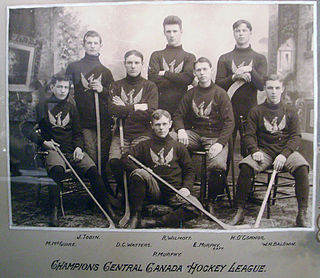
The Ottawa Capitals were the competing clubs of the Capital Amateur Athletic Association (CAAA) of Ottawa, Ontario, Canada. The Association competed in ice hockey, lacrosse and other athletics.
The 1912–13 Ottawa Senators season was the 28th season of play of the Ottawa Hockey Club. Ottawa placed fifth and missed the playoffs.
The 1904–05 Ottawa Hockey Club season, the club's 20th season of play, lasted from January 7, 1905, until March 11, 1905. Ottawa won the league championship of the Federal Amateur Hockey League and successfully defended its Stanley Cup championship against all challengers.
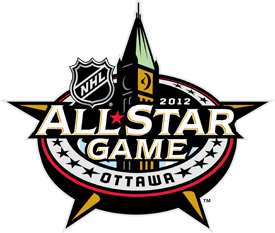
The 2012 National Hockey League All-Star Game, took place on January 29, 2012, at Scotiabank Place in Ottawa. This edition of the All-Star Game featured the "fantasy draft" format first seen in the previous 2011 NHL All-Star Game. The participating players voted for team captains, selecting Daniel Alfredsson of the All-Star host Ottawa Senators and Zdeno Chara of the defending Stanley Cup champion Boston Bruins, himself also a former Senator.


















